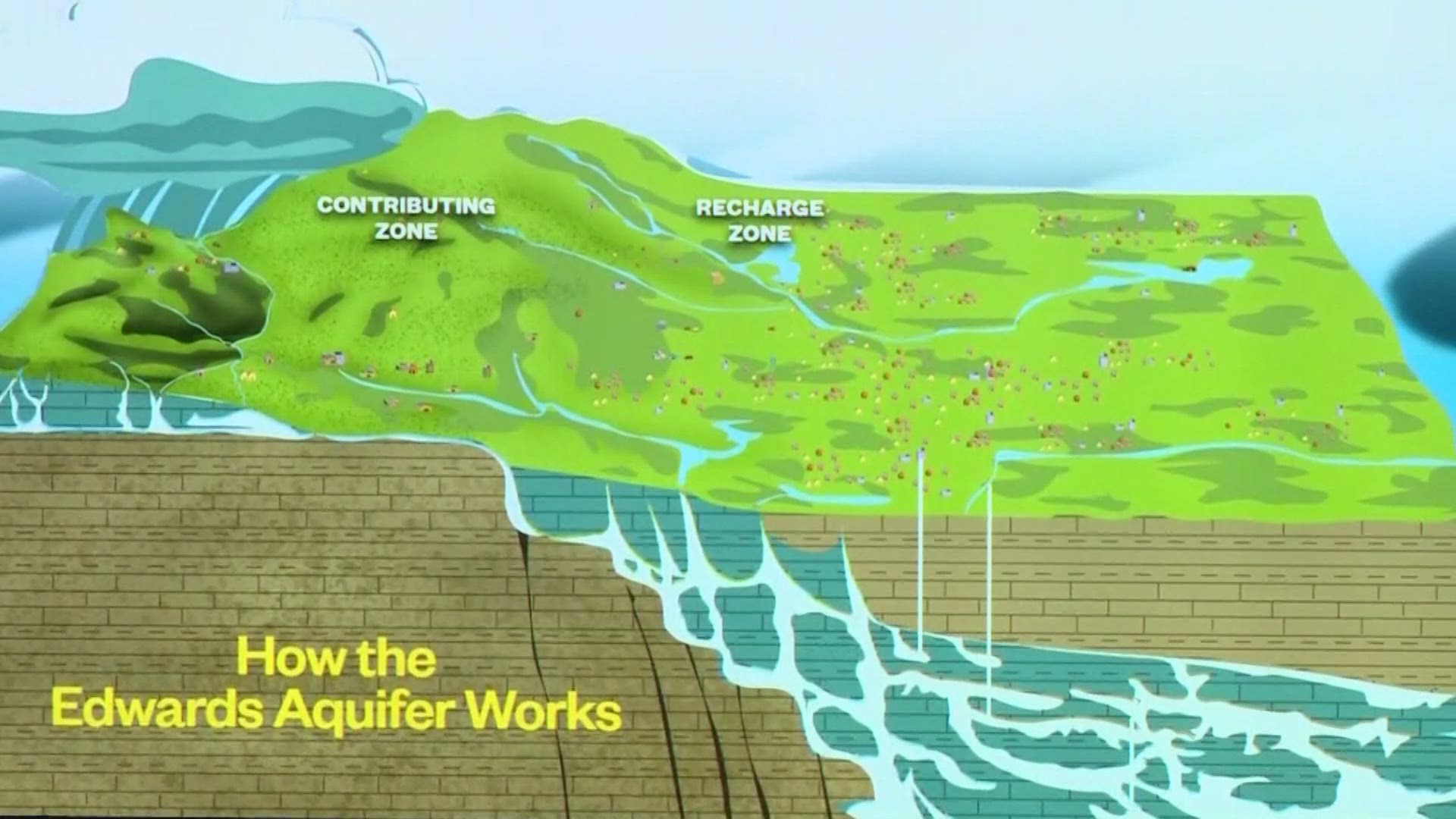SAN ANTONIO — A record-setting streak of heat is worsening drought conditions in South Texas.
Cracked creek beds, low lakes, and a slow flow in the Guadalupe and Comal rivers are all signs of the dwindling surface water.
The problem, however, goes deeper.
At the end of July, the Edwards Aquifer Authority (EAA) entered Stage 4 restrictions.
“That means that permit holders have to reduce their water pumping from the Edwards Aquifer by about 40%,” said Ann-Margaret Gonzalez, a spokesperson for the EAA. “We have 1,200 permit holders. They are comprised of irrigators, agricultural users, industrial users, and water providers. The permit holders then decide how to reduce their usage to meet our requirements.”
Gonzalez says about 2.5 million people rely on the aquifer across eight counties.
“It depends on the water provider themselves,” she said. “They might have a diverse water portfolio, but for the most part, they do pull water from the Edwards Aquifer.”
The aquifer has dropped to its lowest level since 2014, according to Gonzalez.
Entering Stage 5 restrictions will remain a possibility until the region receives some much-needed rain.
“We really are in uncharted waters with the amount of people moving to Texas,” said Vanessa Puig-Williams, who is with the Environmental Defense Fund.
According to Puig-Williams, the EAA is unique because of its water cap. The restrictions help protect endangered species in the Comal and San Marcos springs.
“The Edwards Aquifer Authority is a great model,” said Puig-Williams. “The rest of the state, however, does things differently. Other groundwater conservation districts lack resources and tools to be able to manage groundwater in that proactive way that the EAA can. 60% of the water supply for the State of Texas is groundwater. We really need the state to invest in more data, science, and modeling. What we are seeing right now with the drought is that people’s wells are going dry, we are seeing some of the lowest spring flow, Jacob’s Well has stopped flowing.”
A bit of rain goes a long way, Gonzalez says.
“The Edwards Aquifer is very responsive to rain and drought,” she said. “So, when we get those rainfall events, it will respond in a few days to weeks. We need rain."
National Weather Service (NWS) forecaster Jason Runyen says hope is on the horizon.
“The current forecast from our climate prediction center calls for odds that are tilted towards a wetter than normal winter,” said Runyen. “We are hopeful that perhaps as we get into the fall, and especially during the winter and early next spring, we might get into a wetter and cooler pattern. That might help with the drought conditions.”

